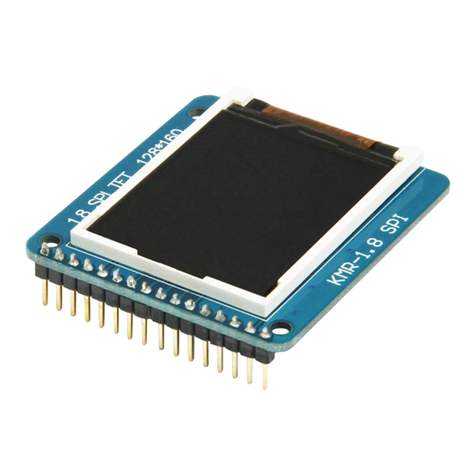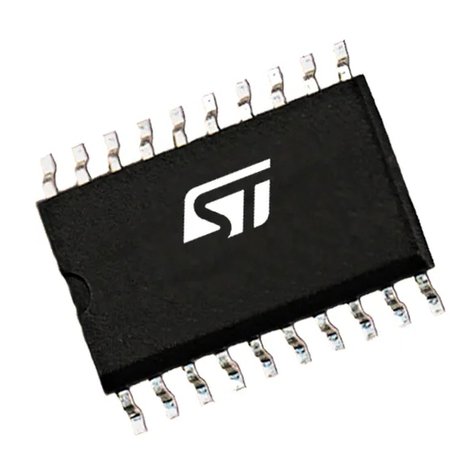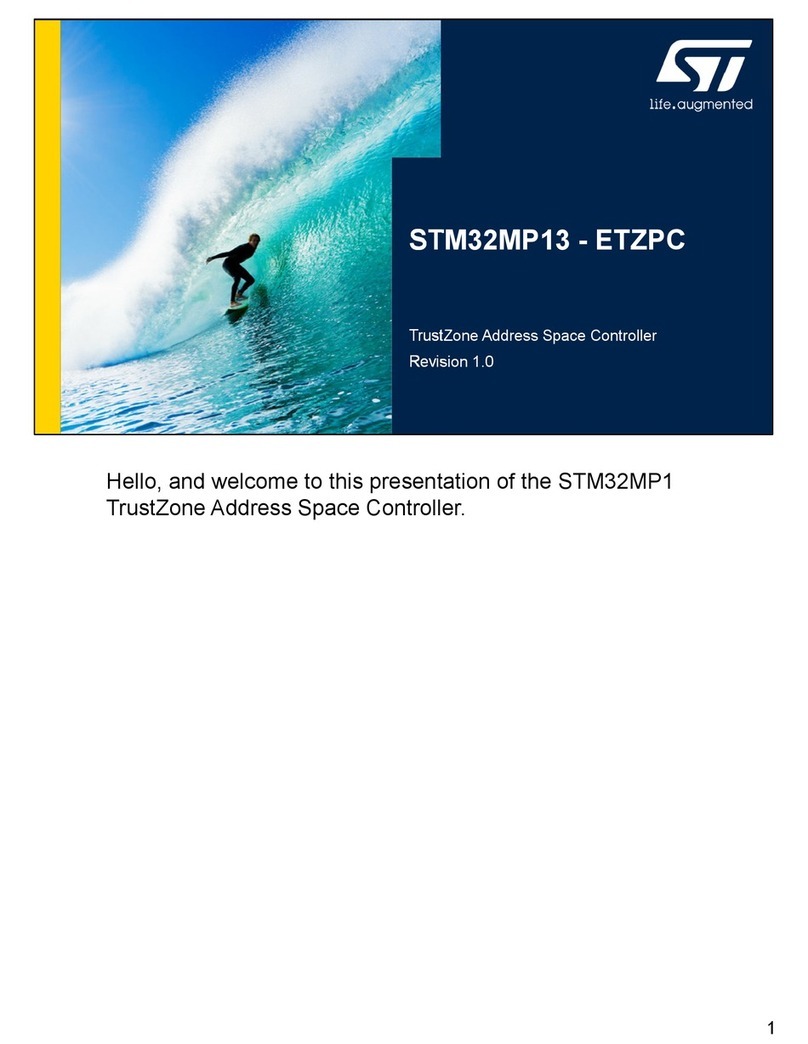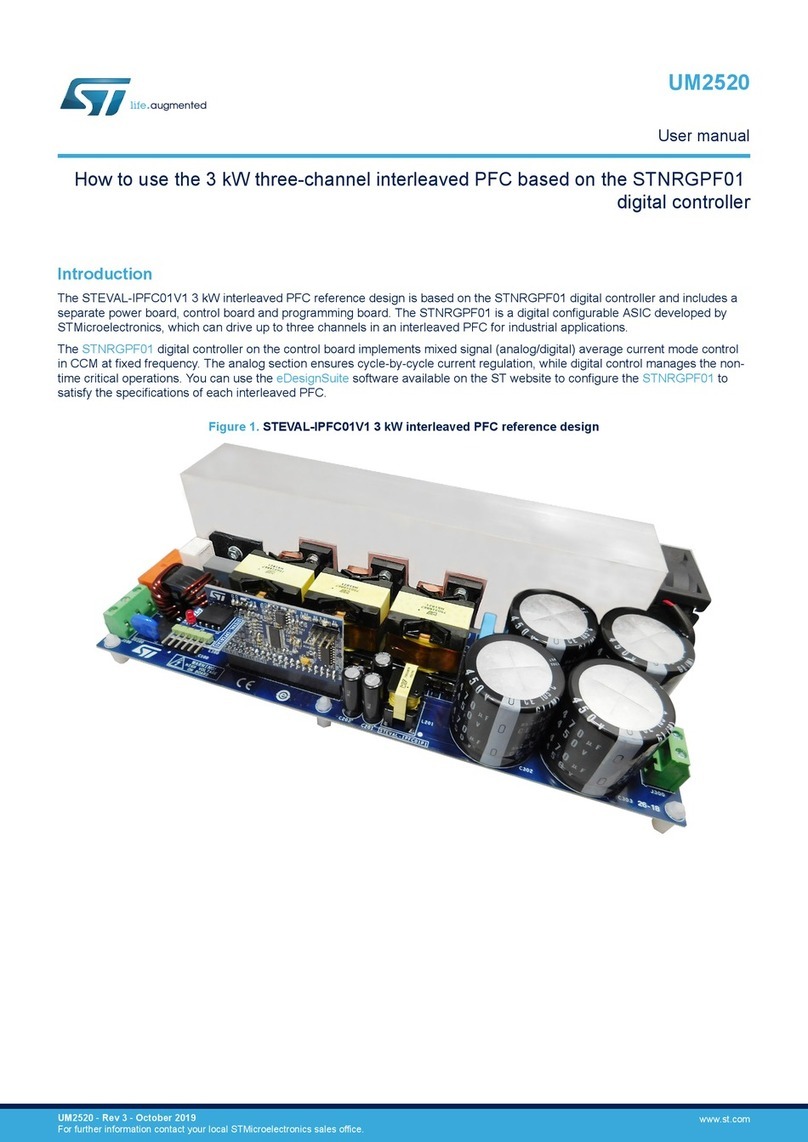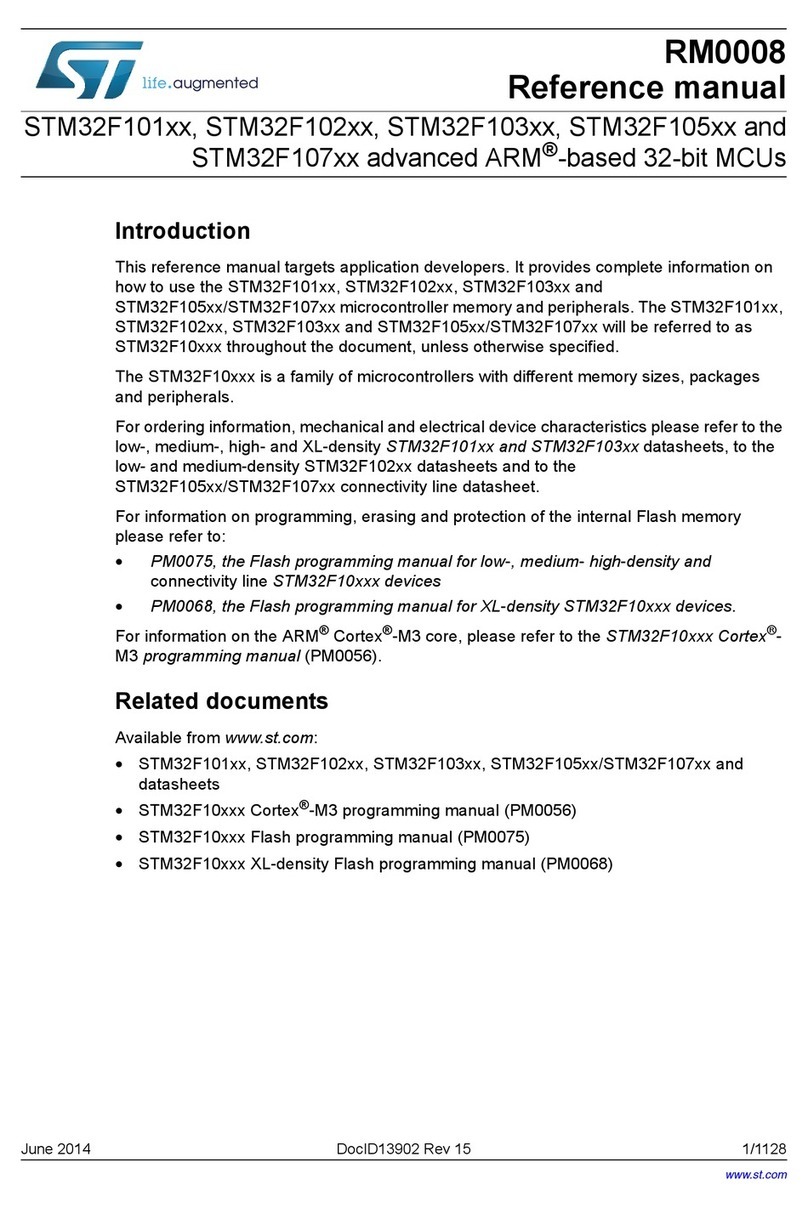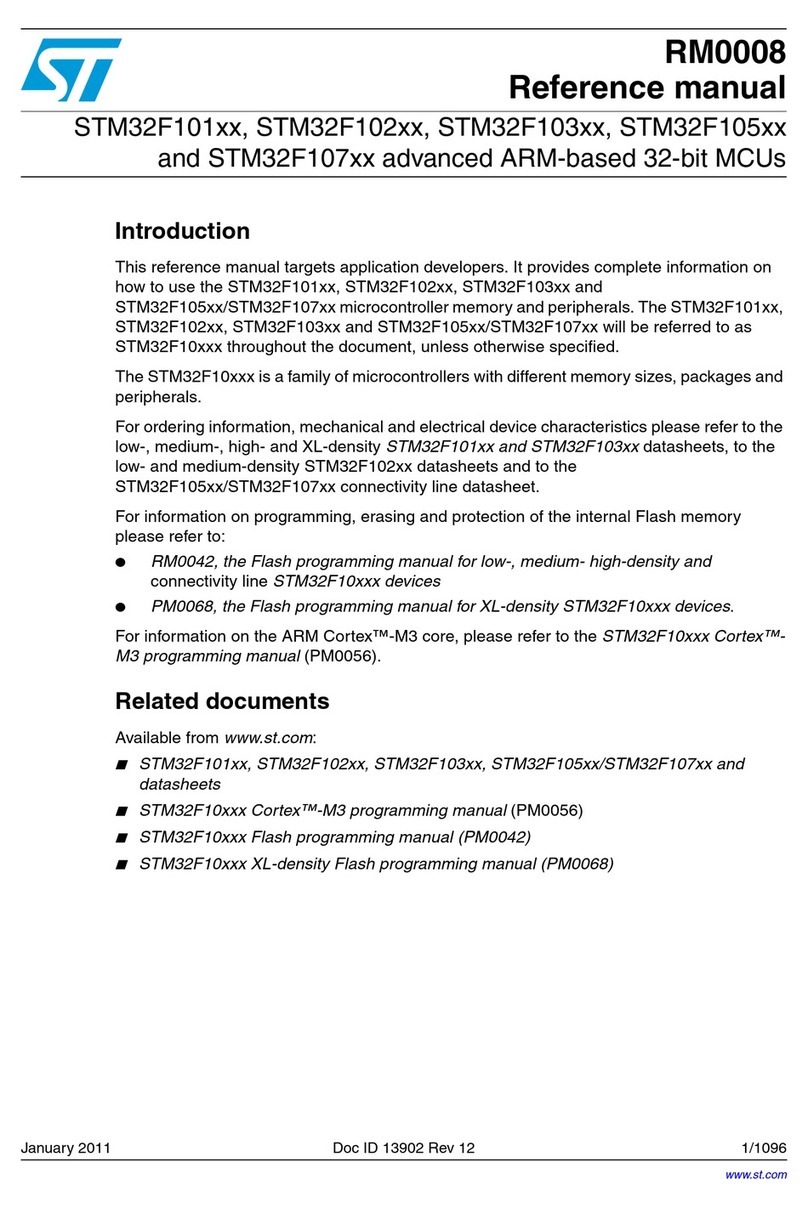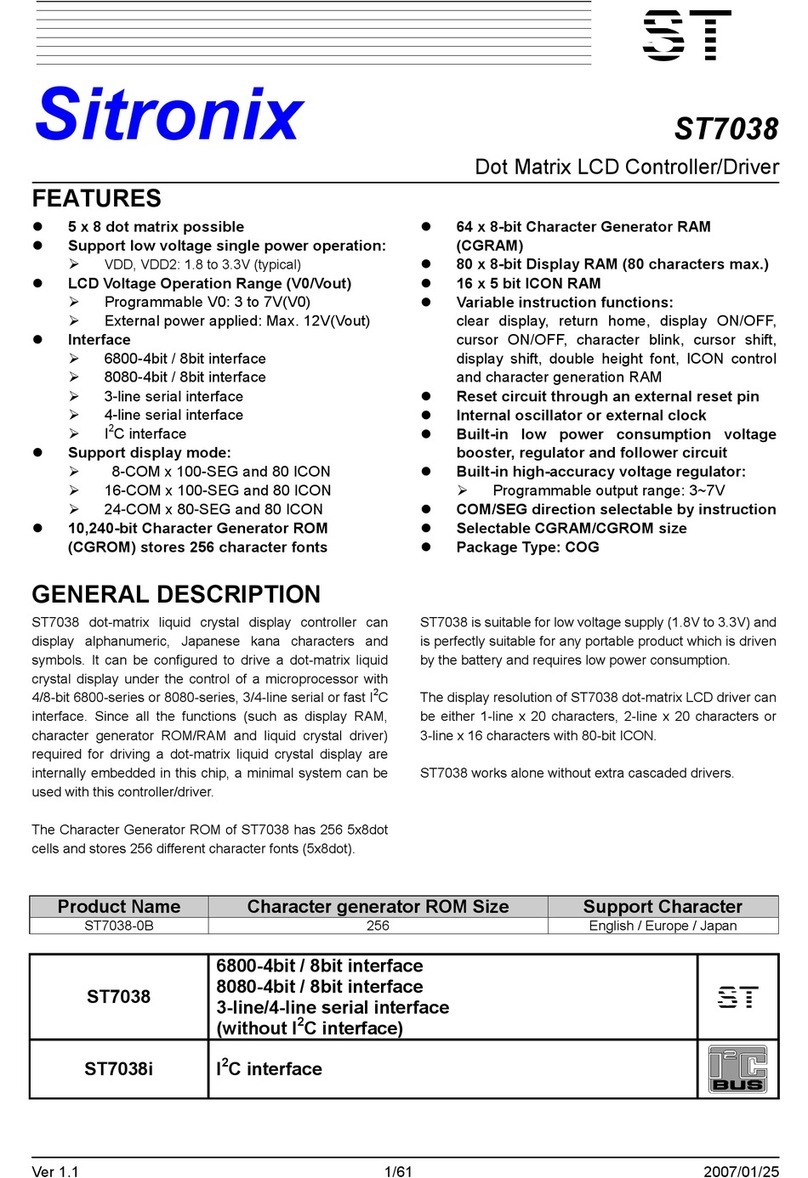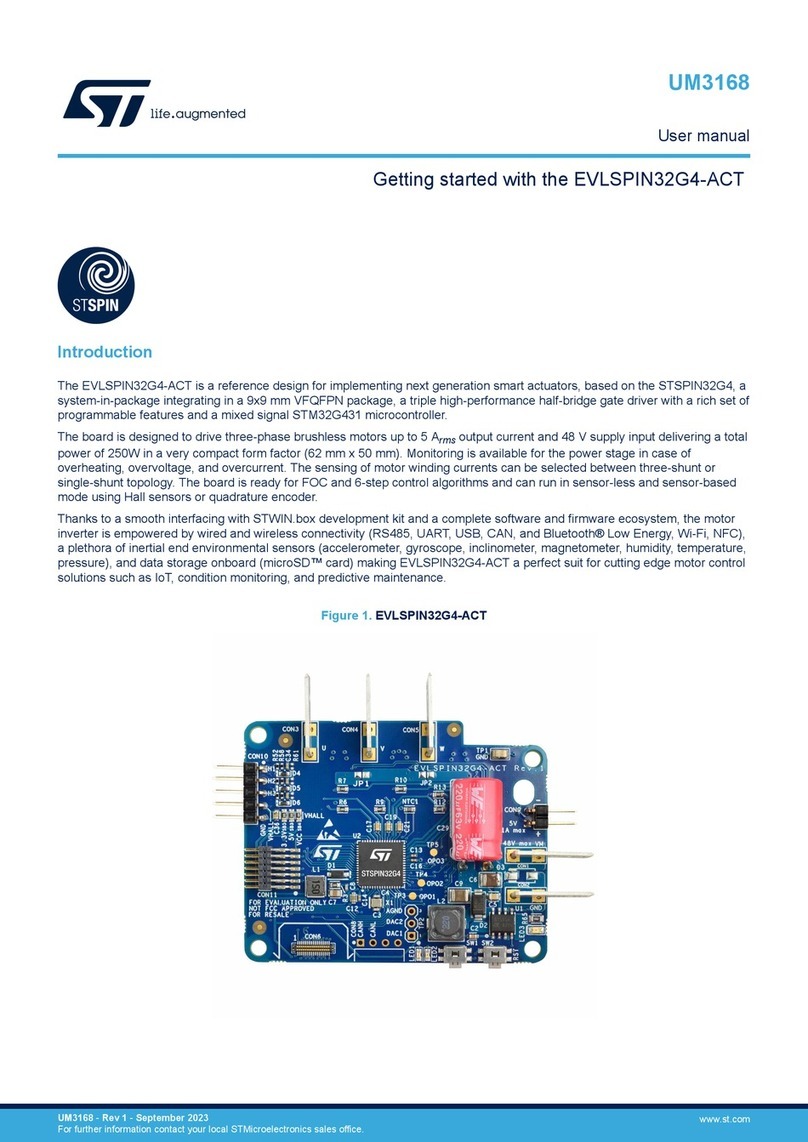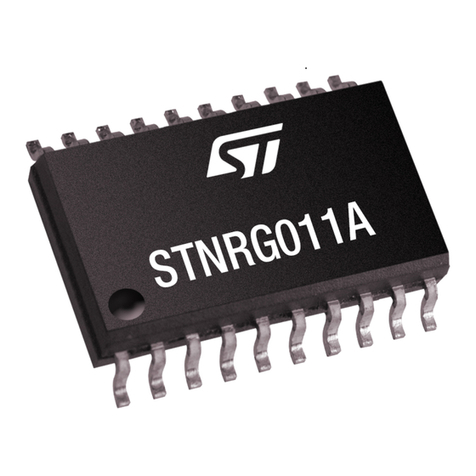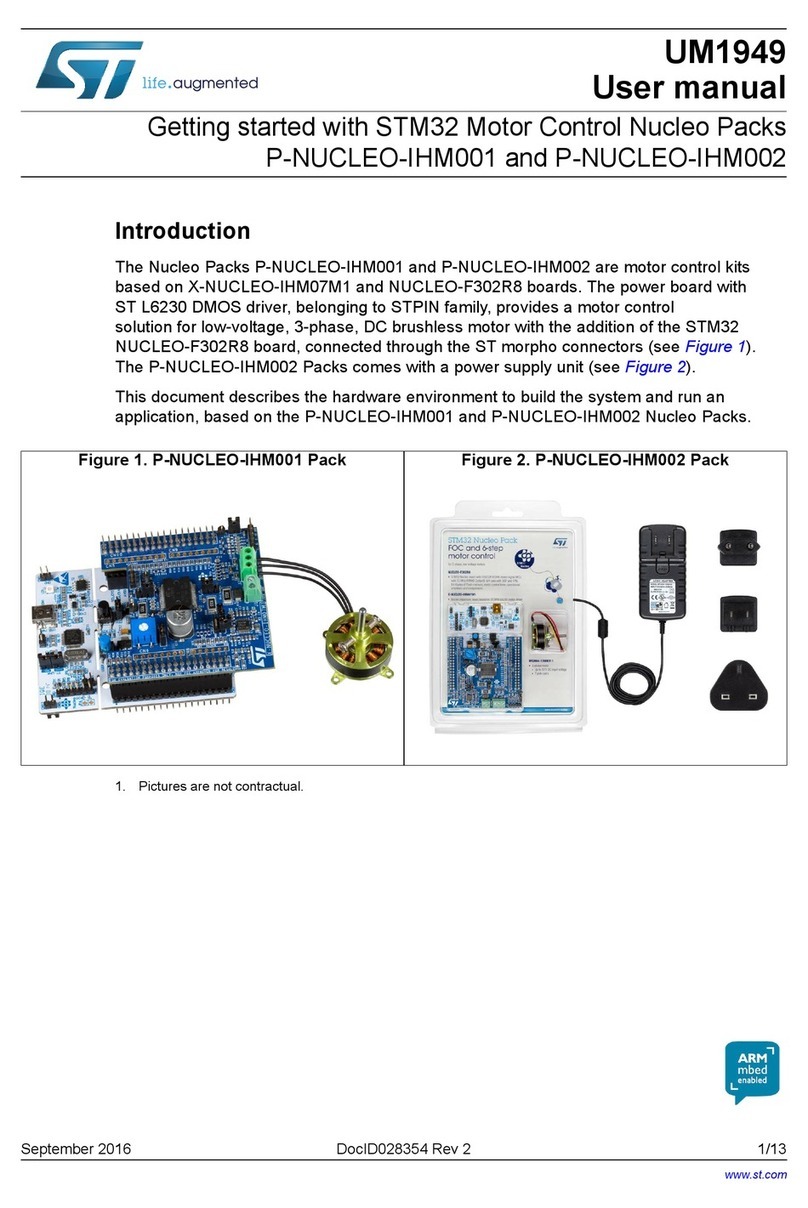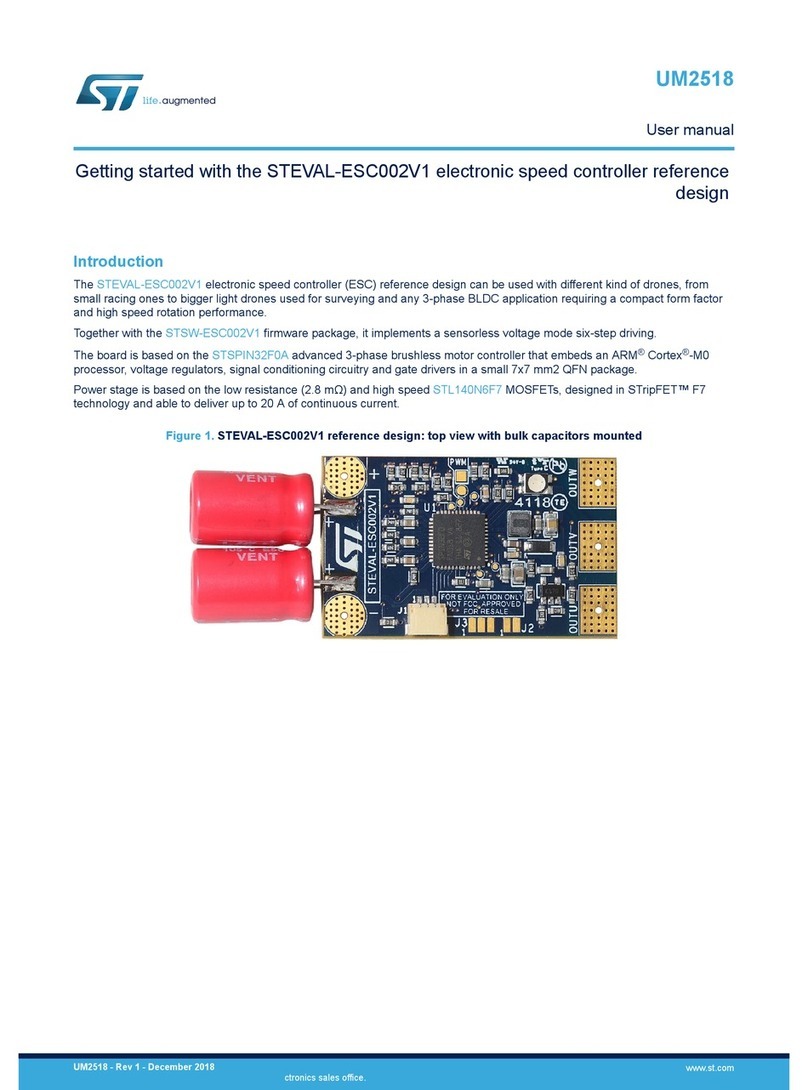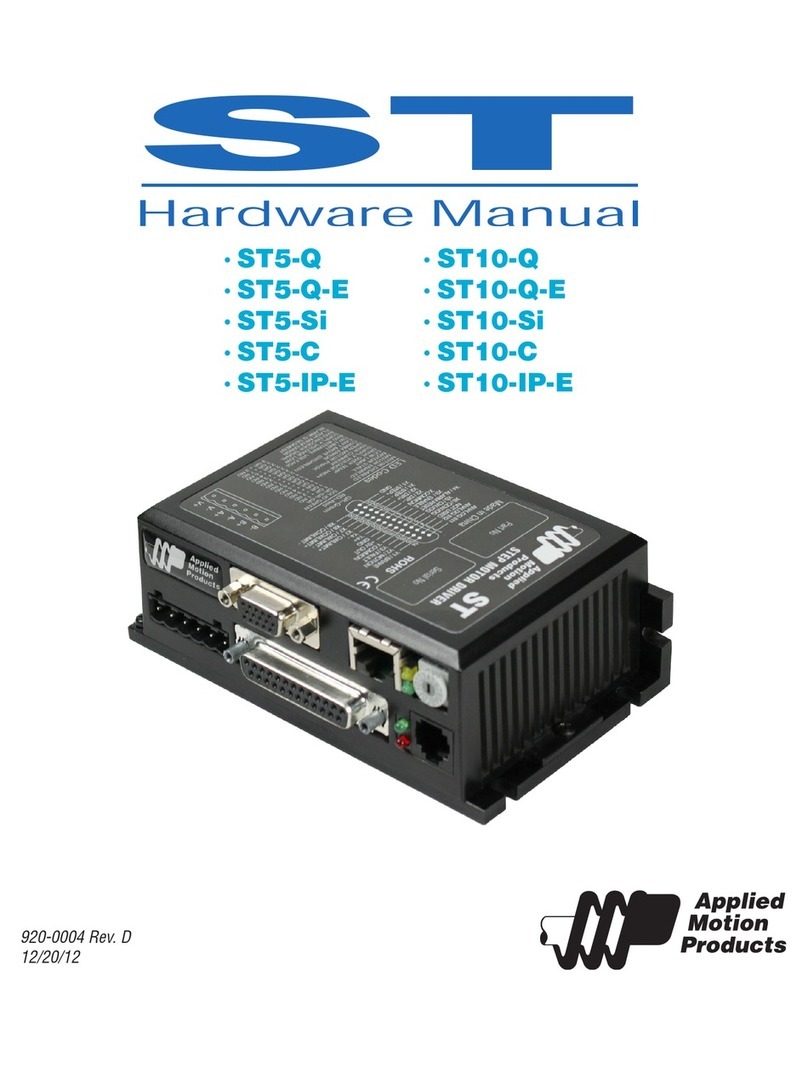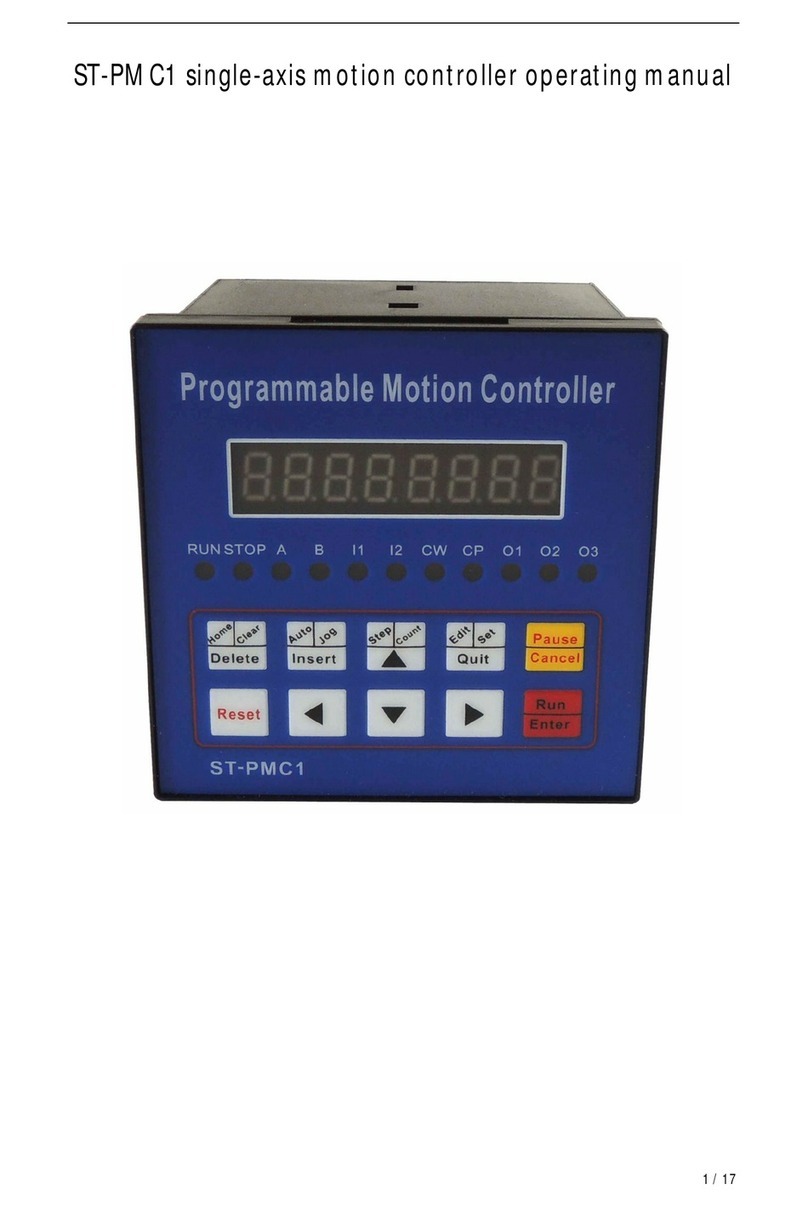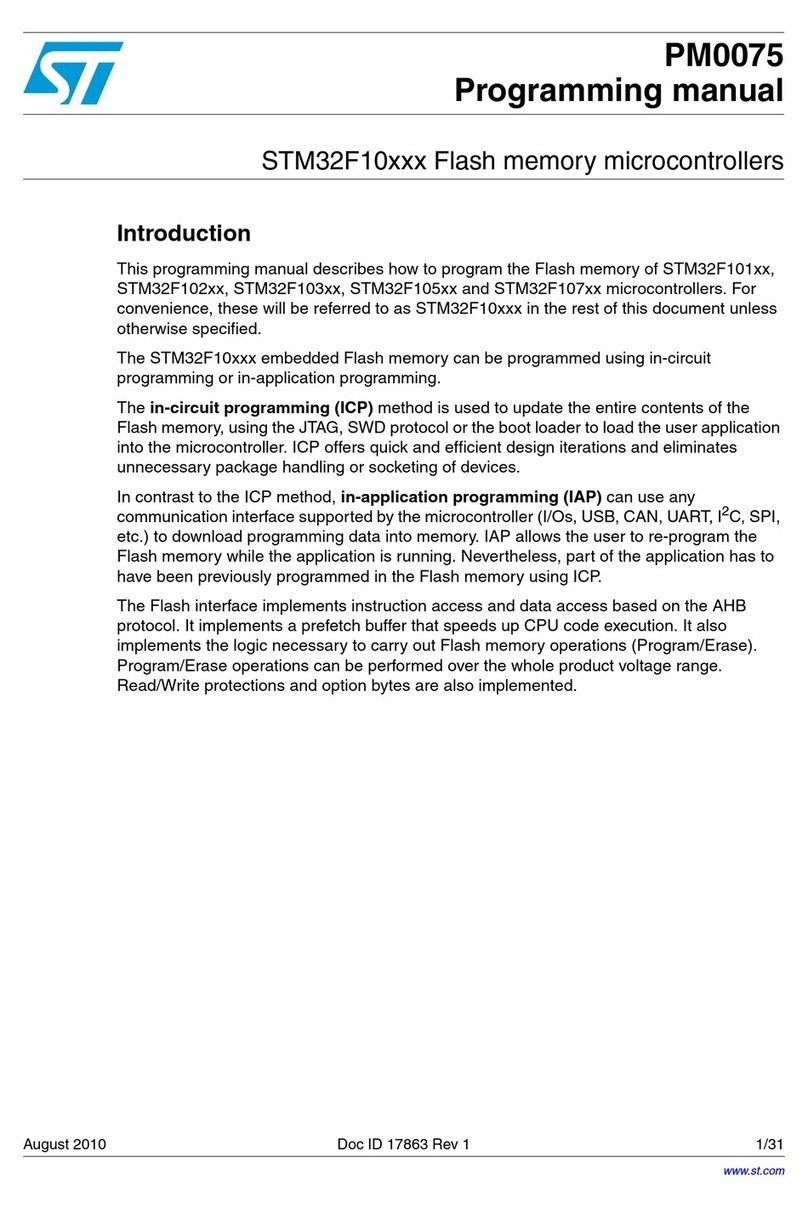
Getting started UM1546
4/17 Doc ID 023229 Rev 1
1 Getting started
1.1 Package
The remote fan speed controller includes the following items:
●Hardware content:
– Demonstration board: STEVAL-IHM037V1
●Documentation:
– User manual (this document)
– Schematics, Gerber files, BOM
●Firmware:
– Pre-programmed STM8S device soldered on the demonstration board
– Object files are also available for the firmware.
1.2 Safety rules
This board can be connected to mains voltage (240 V). In the case of improper use, wrong
installation or malfunction, there is a danger of serious personal injury and damage to
property. All operations such as transport, installation and commissioning, as well as
maintenance, should be carried out only by skilled technical personnel (regional accident
prevention rules must be observed).
Danger: Due to the risk of electrical shock or death when using this
prototype on mains voltage (240 V), only skilled technical
personnel who are familiar with the installation, mounting,
commissioning and operation of power electronic systems
and have the qualifications needed to perform these
functions, may use this prototype.
Warning: The debugger tool must not be connected to 4-pin header(J3)
for SWIM interface when circuit is running on mains supply.
1.3 System setup
The remote fan speed controller board can be setup as follows:
1. Before proceeding, ensure that the mains power supply switch used during testing is
capable of disconnecting both the live and neutral terminals and it is in the off position.
Always wear safety gloves when working with mains operated circuit.
2. Connect fan/lamp live terminal to J5 of the FSC board.
3. Connect the fan neutral terminal to J7 of the FSC board.






